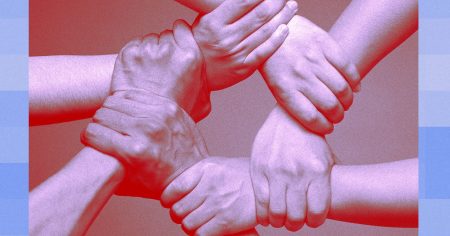President & CEO at American College of Education.
Payments for federal student loans resumed in October after a three-year pause brought on by the Covid-19 pandemic. Millions of households are carrying a heavy financial burden, and this impacts a large population of Americans. In fact, about 43 million federal student loan borrowers still have more than $1.6 trillion in outstanding student loan debt, and the average federal student loan debt balance is $28,950, according to Forbes Advisor. These extreme debt amounts can take decades to pay off.
The extensive impact of federal student loans on the lives of borrowers disrupts many people’s ability to pursue certain life events, including homeownership, traveling or even having children. The financial pressure can also lead to disruptive mental health distress.
A dwindling 36% of Americans have confidence in higher education, but the benefits and importance still remain. Those with a bachelor’s degree earn up to 75% more than those with a high school diploma. Ultimately, more education and higher salaries often run parallel, but the challenge lies in the fact that graduation rates are troubling. This, combined with rising tuition and student debt, keeps higher education inaccessible and unaffordable for many. Students often must choose to opt out of higher education, quit after accruing debt or allocate much of their increased earnings toward debt payments.
Student loan discussions nationwide have largely focused on canceling accrued debt, but tuition inflation has risen faster than regular inflation, which directly contributes to student debt levels. I believe it’s important to note that higher education institutions play a role in tuition inflation, but accountability is limited.
Why is tuition increasing?
Before we can determine why tuition is increasing, we must check all sources of tuition increases and identify if they’re associated with what Carnegie Mellon professor Michael Smith may describe as our ultimate goal as higher education leaders: to make “affordable, high-quality education” available to everybody.
The Wall Street Journal examined (paywall) the financial statements of 50 universities identified as flagships and found that rising tuition is connected to investments in dormitories, amenities, additional layers of administration, sports programs and other similar costs. From my perspective, these investments are important in some regard, but this degree of spending that is unrelated to teaching and learning requires institutions to take some responsibility for tuition inflation.
In order to restore credibility to higher education, I believe more institutions need to provide reasonable tuition levels and refocus on providing high-quality learning.
What can colleges learn from institutions that don’t take federal student loans?
There are some higher education institutions, my own included, that offer education experiences and affordable tuition while excluding federal funding entirely from their payment options. Based on my experience, there are a few lessons I believe higher education leaders in more traditional institutions can consider moving forward.
1. Investment strategy and governance are critical. You can align investments toward initiatives that support student success. Ensure your executive team and board of trustees commit to a strategy and revenue model that keeps costs and tuition manageable. How much are you investing in non-academic staff, marketing, amenities, athletics and Title IV administration?
2. Quality online learning opens doors. High-caliber online programs can provide flexibility for students and help facilitate strong learning outcomes and graduation rates. When properly implemented, I’ve found online learning can help institutions reduce operational costs as well.
3. Centralized curriculum models create consistent learning. Models like this can enable institutions to provide a quality curriculum that is updated regularly and aligned to market needs through regular and direct feedback from employers, students, faculty, graduates and other stakeholders. The addition of enriching content such as multimedia content, animations, gaming, simulations and case studies can increase student engagement.
4. Your faculty’s roles matter. Are your staff’s primary responsibilities to educate students and ensure they’re learning what they need to be successful? Or does the majority of their time go toward research and scholarship? Determine what your students need, and then align your recognition and incentives. A practitioner-led faculty model can help keep instruction relevant and engaging.
5. Data on student progress can drive interventions. Survey your students on an ongoing basis to learn about their engagement and progress, and commit to continuous improvement. Leverage feedback from students to make meaningful and ongoing enhancements and invest in the support that students need to be successful.
6. Program selection is important. Align program offerings to today’s market and employer needs, as appropriate. This alignment can help equip graduates to get ahead in their careers and boost the returns on their investment of time and tuition.
7. Additional student payment options and reduced access to federal student loans could help decrease reliance on subsidies. You can consider strategically adopting course-by-course payment schemes and assess what level of federal student loans are needed and in the best interest of students.
From my perspective, taking these lessons and turning them into action could help with the credibility gap in higher education and the survival of some institutions. The power of change is in the hands of higher education leaders. It’s possible for the value proposition of higher education to improve and for students to graduate with less debt. Leaders in higher education should take steps to ensure college is a desirable and accessible pathway by making tuition more affordable while maintaining a rich and relevant learning experience.
Forbes Business Council is the foremost growth and networking organization for business owners and leaders. Do I qualify?
Read the full article here










